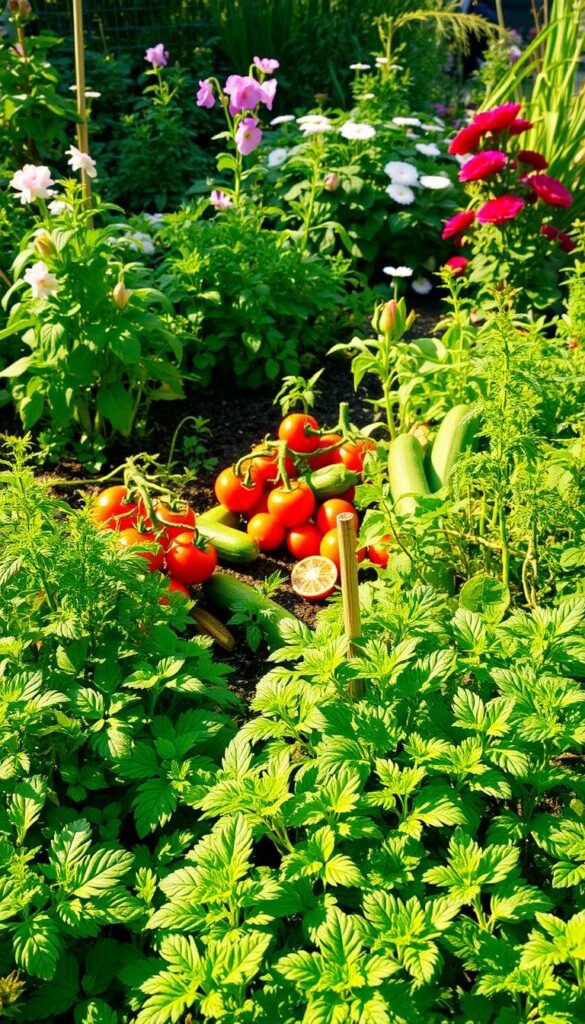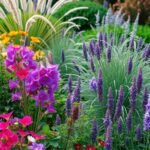Embarking on your first planting project brings excitement and fresh possibilities. Whether you have a spacious backyard or a sunny windowsill, nurturing plants offers rewarding experiences that connect you with nature. The secret lies in smart planning and choosing low-maintenance options that grow with your skills.
Begin by observing your available area. Note sunlight patterns, soil quality, and water access. Many first-time growers find success with hardy herbs like basil or mint, which thrive in containers. Raised beds simplify weed control, while vertical planters save space for urban dwellers.
Focus on tools that make tasks easier, like ergonomic trowels or drip irrigation kits. Pair these with native flowers and vegetables adapted to your region’s climate. This approach reduces upkeep and supports local ecosystems naturally.
You’ll discover how small changes create big impact. Companion planting deters pests without chemicals, and mulch keeps soil moist during dry spells. With each season, your confidence will bloom alongside your plants.
This guide shares practical methods to cultivate beauty and functionality. From selecting starter seeds to arranging colorful blooms, every step builds toward a vibrant outdoor retreat. Let’s grow something wonderful together.
Welcome to Your Green Journey
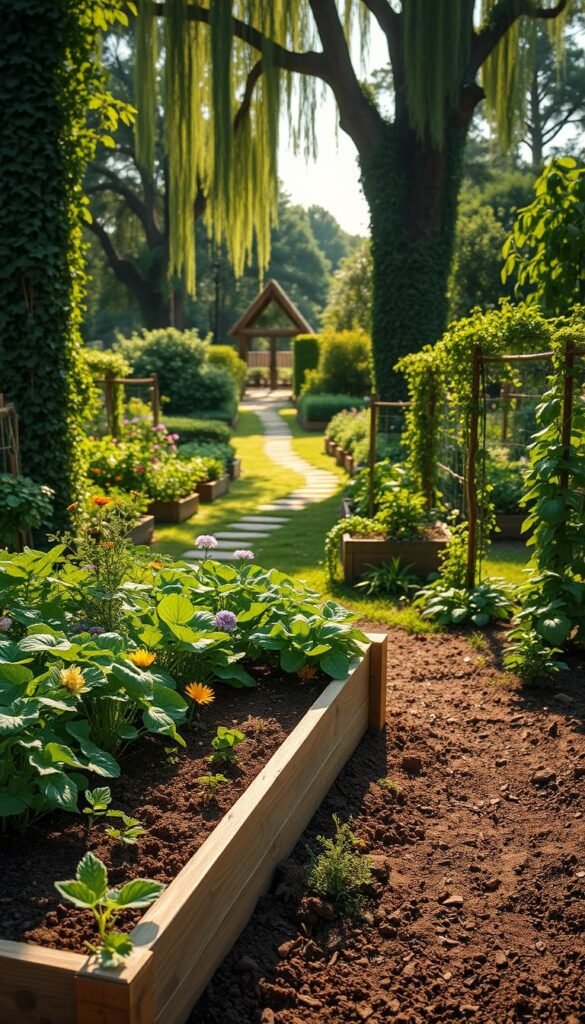
Digging your hands into soil unlocks a world of earthy pleasures and practical rewards. This adventure begins with understanding how sustainable practices save money and effort while creating thriving ecosystems. Even a single potted plant can spark lasting connections with nature’s rhythms.
Getting Started with Your Garden Adventure
Your first step? Assess what you already have. Repurpose old buckets as planters or use fallen leaves as mulch. Many find our ultimate starter checklist helpful for tracking essentials like soil pH testers and seasonal seeds.
Start small with forgiving plants like cherry tomatoes or marigolds. These grow quickly, offering visible progress to keep motivation high. Time outdoors becomes therapeutic as you learn watering patterns and sunlight needs.
| Traditional Approach | Sustainable Swap | Annual Savings |
|---|---|---|
| Plastic pots | Upcycled containers | $15-$40 |
| Chemical fertilizers | Compost bins | $30-$60 |
| Sprinkler systems | Rain barrels | $50-$100 |
Why Gardening is a Rewarding Experience
Watching seeds transform into food or flowers creates unmatched pride. You’ll enjoy fresh herbs all year while attracting butterflies and bees. It’s a great way to personalize your space and develop patience through nature’s timeline.
Studies show just 30 minutes weekly in your garden lowers stress hormones. Each harvest or bloom becomes a milestone, proving that growth—both plant and personal—happens one deliberate step at a time.
Choosing the Right Garden Space
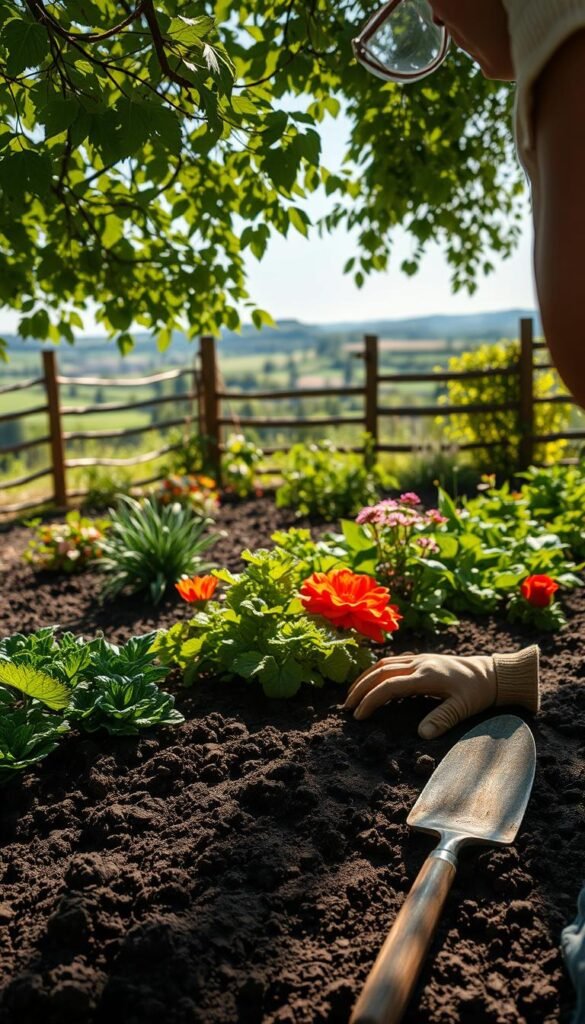
Your growing success begins with matching plants to their ideal home. Whether nurturing a small vegetable garden or designing floral displays, location determines how your green friends thrive. Smart space selection reduces maintenance while boosting yields.
Assessing Your Outdoor Environment
Track sunlight patterns across your potential growing area for 3 days. Note where morning rays hit versus afternoon shade. Most edibles need 6+ hours of direct light – perfect spots might surprise you!
Test soil quality by squeezing a handful. Good organic gardening basics start with ground that holds shape briefly before crumbling. Rocky or clay-heavy areas? Raised beds solve drainage issues beautifully.
| Space Type | Best Plants | Optimization Tip |
|---|---|---|
| Backyard corner | Tomatoes, peppers | Use trellises for vertical growth |
| Balcony rail | Strawberries, nasturtiums | Hanging baskets save floor area |
| Windowsill | Basil, thyme | Rotate pots weekly for even sun |
Maximizing Small Areas
Turn narrow spaces into lush corridors with wall-mounted planters. Herbs like oregano thrive in 6″ pockets, while lettuce grows well in stacked trays. Every surface becomes potential real estate.
Gravel paths between beds create visual depth in tight gardens. They’re cheaper than pavers and let rainwater nourish roots below. Bonus: You’ll spend less time weeding!
Group plants by water needs to simplify care. Drought-tolerant rosemary pairs well with sage, while thirstier cucumbers love basil neighbors. This approach makes every square foot count.
Essential Tools and Materials for Your Garden
Equipping yourself with the proper tools transforms gardening from a chore into a joy. Begin with three essentials: a durable trowel for digging, sharp pruning shears for trimming, and a watering can with a gentle spray nozzle. These basics handle 90% of tasks while keeping your garden thriving.
Protect your hands with breathable gloves that offer grip without restricting movement. When working in the ground, a kneeling pad saves your knees during long planting sessions. Make sure to test tool handles for comfort—ergonomic designs reduce strain, especially if you have arthritis or limited strength.
Quality matters more than quantity. A rust-resistant trowel lasts years, while flimsy versions bend in tough soil. Our guide to essential beginner gardening tools helps prioritize purchases. For example, a $25 soil scoop outperforms cheaper models and doubles as a measuring cup for fertilizers.
As your skills grow, add items like a pH tester or trellis kits. Start with plenty of organic potting mix and compost to nourish plants. Remember: good tools become extensions of your hands, making every snip, dig, and water feel effortless.
Planning Your Garden Layout and Design
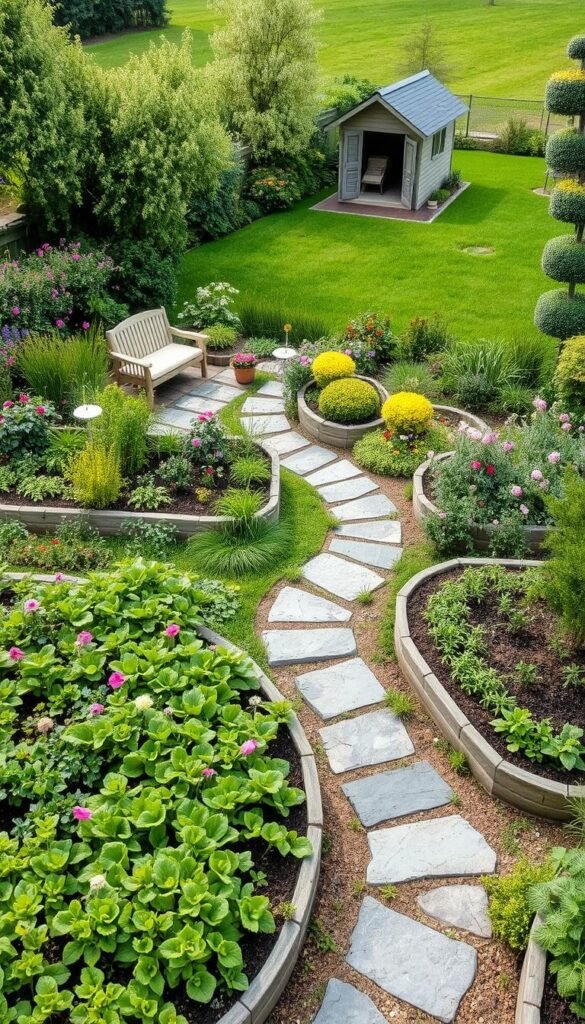
Transform your outdoor space into a living landscape that invites exploration. Smart design balances beauty with purpose, guiding visitors through curated views while supporting plant health. Start by sketching your area’s shape and noting existing features like trees or slopes.
Mixing Function with Aesthetic
Curved pathways create natural flow, leading eyes toward focal points like birdbaths or flowering shrubs. Instead of lining planting areas along fences, position raised beds as islands in your lawn. This central placement makes harvesting easier and adds depth.
| Design Element | Practical Benefit | Visual Impact |
|---|---|---|
| Curved pathways | Reduces soil compaction | Softens geometric lines |
| Central planting beds | Improves air circulation | Creates layered textures |
| Focal point seating | Encourages relaxation | Anchors the space |
Creating Zones for Different Plant Types
Divide your garden into “rooms” based on sunlight and usage. A sunny corner suits tomatoes, while shaded nooks host ferns. For elevating your garden’s visual appeal, group flowers by color intensity—cool tones in quiet zones, bright hues near entertainment areas.
Use evergreen shrubs as natural dividers between zones. They provide year-round structure without blocking light. Remember: overlapping scents from herbs and blooms enhance every journey through your personalized paradise.
Simple Garden Ideas for Beginners Starting Their Green Journey

Cultivating your outdoor space becomes an adventure when you blend creativity with ecological purpose. Focus on designs that balance visual appeal with practical benefits, ensuring your efforts yield both beauty and biodiversity.
A pollinator-friendly layout tops the list of rewarding projects. Combine native flowers like coneflowers and bee balm with flowering shrubs such as butterfly bush. These selections attract hummingbirds while supporting local ecosystems. Include milkweed for monarch butterflies—they’ll return yearly once established.
- Low-effort charm: Cottage-style arrangements mix lavender, daisies, and rosemary in casual clusters
- Adaptable containers: Group pots of marigolds and basil near seating areas for movable color
- Seasonal flexibility: Swap out annuals like pansies each spring without redesigning beds
Container setups offer instant gratification for new growers. Use window boxes for trailing petunias or compact cherry tomatoes. Hanging baskets with fuchsias create vertical interest while keeping plants at eye level for easy care.
| Garden Type | Key Benefit | Starter Plants |
|---|---|---|
| Pollinator | Supports wildlife | Sunflowers, salvia |
| Cottage | Year-round blooms | Peonies, sage |
| Container | Space-efficient | Dwarf zinnias, thyme |
These approaches let you experiment without overwhelming commitments. As your confidence grows, layer in more complex elements like trellised cucumbers or berry bushes. Every bloom and harvest becomes proof of progress.
Designing with Containers and Raised Beds
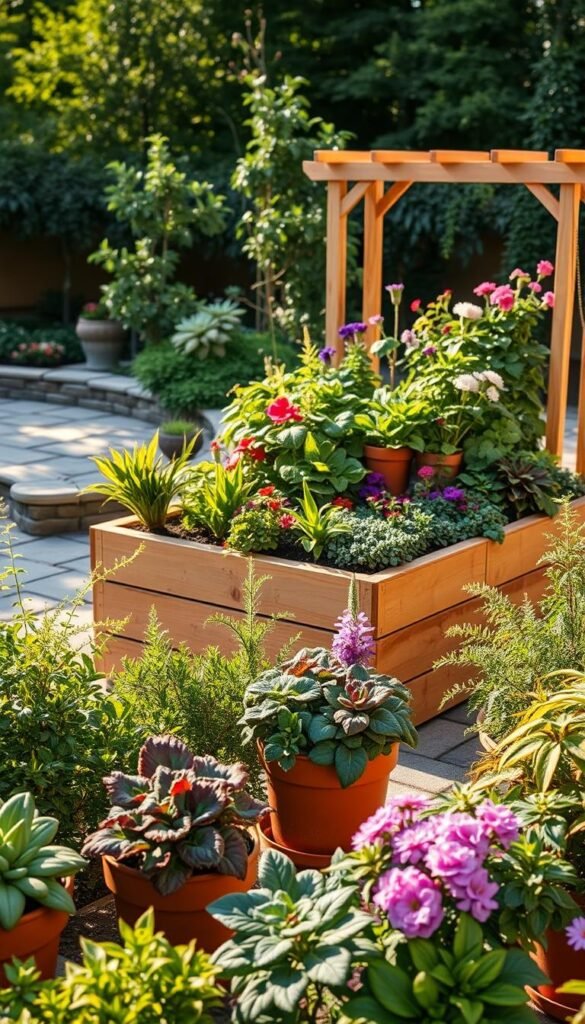
Elevate your growing game by reimagining how you use vertical and horizontal surfaces. Containers and raised beds solve common challenges like poor soil quality or limited square footage while letting you showcase personal style.
Innovative Container Ideas
Swap a cluster of small pots for one bold statement piece. A 24-inch planter filled with colorful container gardening flowers like geraniums and lobelia becomes an instant focal point. Hanging planters maximize vertical space—try trailing ivy or cherry tomatoes on sunny walls.
Mix textures for visual depth. Pair spiky succulents with soft sweet potato vines in the same container. “Grouping three planters at different heights creates a mini oasis, even on apartment balconies,” suggests urban gardener Mara Lin.
| Container Type | Best Use | Plant Examples |
|---|---|---|
| Self-watering pots | Busy schedules | Basil, begonias |
| Fabric grow bags | Root vegetables | Carrots, radishes |
| Repurposed crates | Herb gardens | Thyme, oregano |
Building and Arranging Raised Beds
Construct beds 12-18″ tall for easy access. Fill them with a 50/50 mix of topsoil and compost. This setup lets you grow deep-rooted plants like peppers without battling rocky ground.
Arrange beds in U-shapes or L-shapes to create intimate growing zones. Leave 24″ between boxes for comfortable movement. For small spaces, try tiered designs—plant lettuce in the upper level and strawberries below.
Pair your containers and beds strategically. Place pots of mint near vegetable beds to deter pests naturally. Explore vibrant flower combinations that make functional spaces feel like curated displays.
Planting Basics for New Gardeners
Mastering basic planting techniques unlocks your garden’s potential. When you handle roots gently and position each specimen correctly, you create strong foundations for growth. These skills help avoid common issues like root rot or stunted development.
Depth matters more than you might think. Match the soil line on stems to their original nursery pot level—burying too deep suffocates roots, while shallow placement causes instability. For bare-root plants, spread roots outward in a prepared hole wider than the root system.
Give your green friends breathing room. Check seed packets or tags for mature sizes, then space accordingly. Crowded plants compete for sunlight and nutrients, increasing disease risks.
| Plant Type | Ideal Spacing | Depth Tip |
|---|---|---|
| Tomatoes | 24-36 inches | Bury stem up to first leaves |
| Lettuce | 6-8 inches | Surface-level placement |
| Zinnias | 12-18 inches | 1/4 inch soil cover |
Water thoroughly after planting—moisture helps roots bond with surrounding ground. Use a gentle stream to prevent soil erosion. Check moisture daily for the first week by sticking a finger 2 inches deep.
Always read plant tags before digging. They reveal sunlight needs, watering frequency, and growth habits. This knowledge lets you pair sun-loving basil with peppers rather than shade-preferring spinach. Smart placement reduces maintenance and boosts yields.
Selecting the Right Plants for Every Season
Crafting a garden that evolves with the seasons brings endless delight and year-round rewards. By blending perennials, annuals, and bulbs, you create living artwork that shifts colors and textures naturally. This approach minimizes replanting while maximizing visual impact.
Choosing Perennials, Annuals, and Bulbs
Perennials form your garden’s backbone, returning stronger each year. Lavender and coneflowers establish deep roots over three seasons: “First they sleep, then creep, then leap,” as seasoned growers say. Pair them with annuals like zinnias for instant summer color bursts.
Fall-planted bulbs like tulips and daffodils deliver early spring surprises. They multiply underground, creating expanding floral displays. For winter interest, add evergreen shrubs or ornamental grasses with feathery seed heads.
| Plant Type | Key Benefit | Top Picks |
|---|---|---|
| Perennials | Long-term growth | Daylilies, hostas |
| Annuals | Continuous blooms | Marigolds, petunias |
| Bulbs | Early spring color | Crocus, hyacinth |
Seasonal Planting Tips
Map your garden’s bloom calendar. Plant summer-flowering bulbs in late spring, and spring bloomers in autumn. Stagger planting dates for waves of color—try early, mid, and late-season tulip varieties.
Mix plants with winter berries or textured bark to maintain interest after frost. Hydrangeas offer dried flower heads that catch snow beautifully. Remember: diversity keeps your space lively through every season.
Track each plant’s maturity timeline. New peony roots might take three years to flower profusely, but their decades-long lifespan rewards patience. Pair them with quick-growing annuals for instant gratification while waiting.
Creating a Sustainable and Eco-Friendly Garden
Small daily choices in your outdoor space ripple outward, benefiting both your plants and local ecosystems. Start by replacing chemical fertilizers with compost from kitchen scraps—this “black gold” feeds soil microbes while reducing landfill waste. Pair this with rainwater barrels to capture nature’s irrigation system, cutting water bills by up to 30%.
Eco-friendly Practices You Can Implement
Design your landscape to support wildlife year-round. Cluster native flowers like purple coneflowers and goldenrod that bloom from spring through fall. These provide continuous nectar for bees and butterflies while requiring minimal care.
- Leave seed heads standing in winter as bird food sources
- Install bee hotels using hollow bamboo stems
- Swap grass lawns for clover mixes that need less mowing
Natural pest control keeps your garden balanced. Encourage ladybugs by planting dill and fennel—they devour aphids without chemicals. Fallen leaves become free mulch, suppressing weeds while enriching soil as they decompose.
| Traditional Method | Sustainable Alternative | Wildlife Benefit |
|---|---|---|
| Pesticide sprays | Companion planting | Protects pollinators |
| Plastic edging | Native stone borders | Creates lizard habitats |
| Exotic shrubs | Berry-producing bushes | Feeds migrating birds |
These strategies create self-sustaining spaces where wildlife thrives alongside your plants. You’ll spend less time battling pests and more moments enjoying hummingbirds sipping from salvias or frogs hiding in your rain garden.
Incorporating Kitchen Garden Elements for Fresh Produce
Fresh flavors thrive when your kitchen and garden work hand in hand. A kitchen garden brings ingredients within arm’s reach, turning meal prep into a farm-to-table experience. Even compact areas can yield basil for pesto or cherry tomatoes for salads with thoughtful planning.
Growing Herbs and Vegetables in Small Spaces
Start by placing pots where you’ll see them daily—windowsills, countertops, or balcony corners. Most herbs need 4-6 hours of sunlight, but chives and mint tolerate shade. Use containers with drainage holes and a gravel base to prevent soggy roots.
Mix edible plants with decorative ones for visual appeal. Try rosemary topiaries beside patio chairs or lettuce in colorful window boxes. Our guide to container gardening hacks shares clever ways to maximize every inch.
Harvest leaves in the morning when oils peak for bold flavors. Snip regularly to encourage bushy growth—one $3 plant can season meals for months. Pair your vegetable garden with pollinator-friendly flowers to boost yields naturally.

